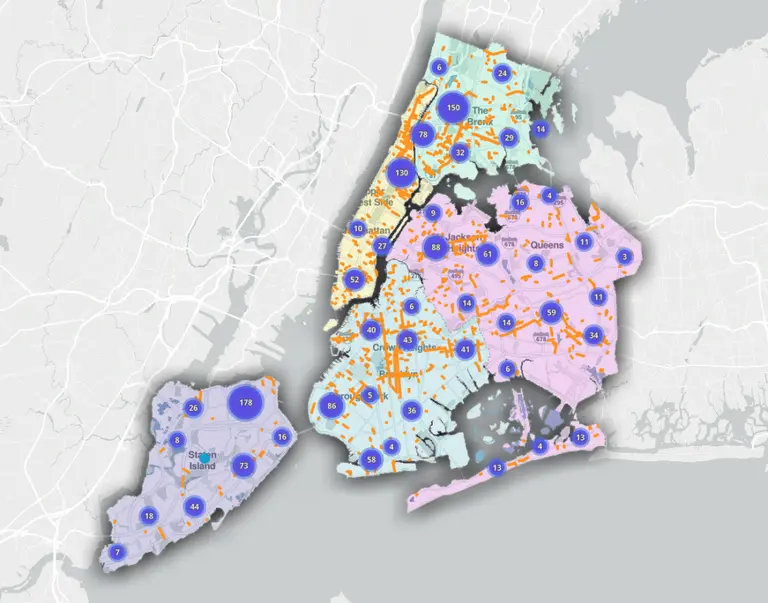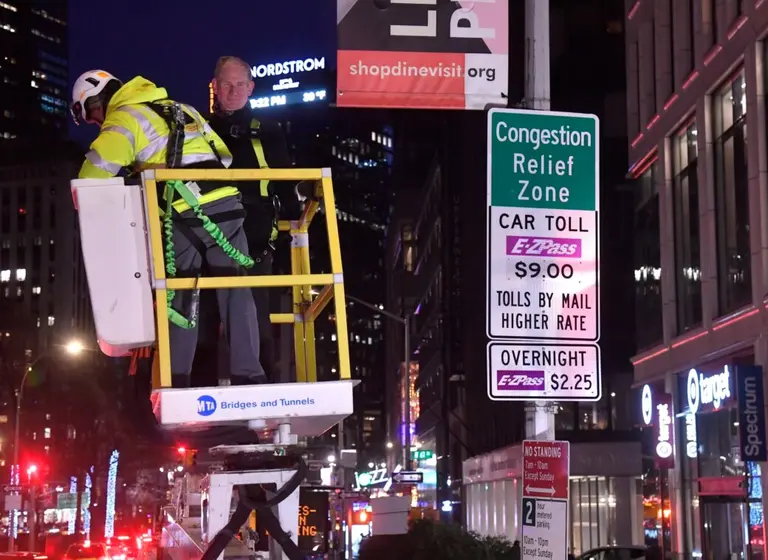With the rise of ride-hailing apps, daily yellow cab trips fell 27 percent since 2010

6sqft recently shared analysis that 3,000 ridesharing vehicles could replace the city’s fleet of 13,587 taxis. And while this was more a comment on how carpooling can decrease congestion and emissions, it also points to a changing landscape for yellow cabs. In a piece this weekend, the Times looks at how taxis have fallen out of favor with New Yorkers since apps like Uber and Lyft came onto the scene; these vehicles now number more than 60,000. In 2010, for example, yellow cabs made an average of 463,701 trips, 27 percent more than the 336,737 trips this past November, which also resulted in a drop in fares from $5.17 million to $4.98 million. And just since 2014, the cost of a cab medallion was cut in less than half of its former $1.3 million price tag.
The Times laments that the yellow cab “was once the main alternative to subways and buses, hailed by rich and poor alike.” But today, the “e-dispatch services” cater a tech-focused society and offer incentives that cabs cannot, such as promotions, estimated wait times, mobile payments, and low-cost carpool options. They’ve also filled the gaps in neighborhoods where taxis historically haven’t traveled.
And if the competition from ridesharing apps wasn’t enough, taxis must also complete with improved transit options like Citi Bike and the new Second Avenue Subway. To deal with this shift, the Metropolitan Taxicab Board of Trade, have introduced their own apps, Arro and Curb, and are opening a training and recruitment center in Queens. But still, many taxi drivers have made the jump over to Uber and similar services, and the numbers don’t lie: In October 2016, Uber provided an average of 226,046 rides a day, followed by Lyft’s 35,908, Via’s 21,698, Juno’s 20,426, and Gett’s 7,227.
[Via NYT]
RELATED:




























